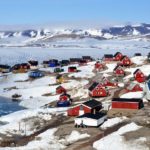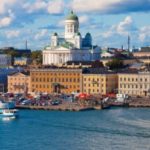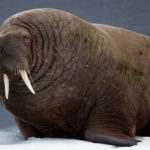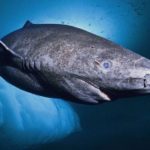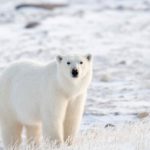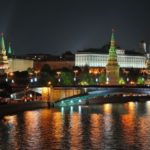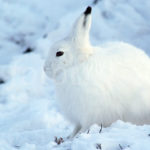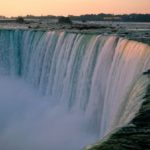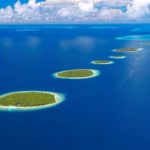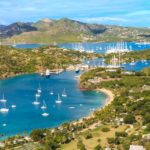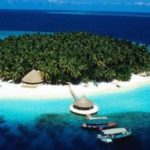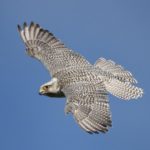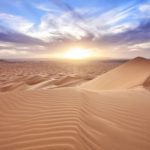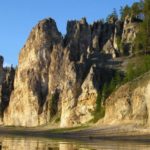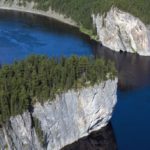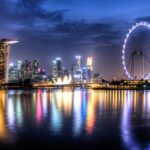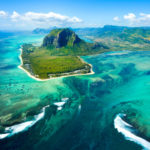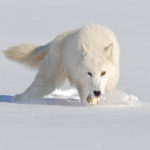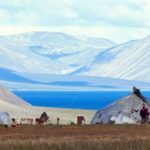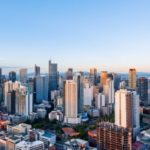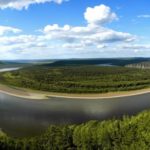Greenland
 Greenland means Green Earth, although the Inuit Eskimo people call their land “Calaallite Nunaat”, which means “Land of people”. The area of Greenland is more than 2 million square kilometers, and only 56 thousand people live here. Eight English or five Norway with the same population could easily accommodate in such an area. But this is not possible, because almost three quarters of Greenland is a land completely covered with eternal ice.
Greenland means Green Earth, although the Inuit Eskimo people call their land “Calaallite Nunaat”, which means “Land of people”. The area of Greenland is more than 2 million square kilometers, and only 56 thousand people live here. Eight English or five Norway with the same population could easily accommodate in such an area. But this is not possible, because almost three quarters of Greenland is a land completely covered with eternal ice.
And yet people live here. Moreover, according to the UN, the standard of living in Greenland is so high that in this indicator it is among the ten most prosperous countries in the world. Paradox? Nothing like this. Everything is determined by the attitude of people and their life position. This northern island is not like the Bahamas or New Guinea, you can’t sit under a palm tree where coconuts fall from above. Here in the north, everything is mined by hard work, often with a risk to life. People living here are not used to messing around and therefore, despite the cold weather, quite comfortable conditions for living, working and relaxing are created here.
This northern, sparsely populated land has long attracted people from North America and Iceland. Back in 875, the Norman Gunbyorn was the first of the Europeans to visit this island. And in 982, Eric Raudi with several comrades settled on the island, expelled from Iceland for his crimes. Later, Norwegian Vikings joined them. In 983, the first Norman colony was founded in Greenland.
But this does not mean that before the Europeans the island was deserted. Long before their arrival, for several thousand years, the Greenland Eskimos lived on the island, although they call themselves Inuit, the name “Eskimo” which means short, is considered offensive. Inuit adapted to the conditions of the Arctic climate and feel quite comfortable. From time immemorial they are engaged in fishing and hunting.
The main part of the island is a kind of platform, the average height of which is about 125 m. The inner part of Greenland has significant depressions, and although the ice cover rises significantly above the island, the soil base under the glacier, in many places, has a mark below the sea level. These depressions most likely came from the enormous weight of the glacier. But there are elevations. The mountain ranges of the south rise up to 1,500–1600 m, and in the east and north up to 3,000 m. In the northern part is Mount Gunbyorn, whose height is 3,700 meters. Mount Gunbyorn is the highest point of the entire Arctic.
The northern and eastern parts of the island are almost always under snow and glaciers. A little south, on the east and northeast coasts, the climate is slightly milder, but there are only a few Inuit settlements. Well, the coastal strip of the south and west of the island in the summer is covered with green meadows and forest-tundra vegetation. It grows mainly polar birch and willow shrub. But thick and juicy grass is a wonderful forage for cattle grazing. Fertile soil is quite suitable for growing vegetables. Here in the south and west the main part of the population lives. These areas are relatively warm. In summer, the temperature here is about + 8-10, and in winter -8-10.
For its entire existence, after Europeans settled Greenland, the island was repeatedly passed from hand to hand.
Since the days of European exploration, the island has been Norwegian, but in 1536 it crossed Denmark, in accordance with the unity between Denmark and Norway. In 1721, a Danish colony called Gothob was officially established on the island. Following the dissolution of the union between Norway and Denmark, in 1814, Greenland became wholly owned by Denmark. In 1931, the eastern part of Greenland again wanted to take control of Norway, but the International Court of Justice in The Hague did not recognize its harassment. During World War II, the United States, with the consent of Denmark, deployed several of its military bases in Greenland. True, only piles of iron and the remains of rusted equipment remained from them.
The administration of the country has undergone significant changes over the years. If in the XIIIV-XIX centuries it was a complete colony, then in 1953, in accordance with the Danish constitution, Greenland received internal autonomy. Since then, the Danish Parliament is considered the legislative power, and Greenland’s own parliament of 31 people elected for 4 years. But until 1979, the executive was represented by the commissioner, who was appointed by the Danish government. In 1978, after many years of Greenland speeches, Folketing, the unicameral parliament of Denmark, ratified the island’s full autonomy. Since 1979, it entered into force. The capital was approved by the city of Nook, the old name of Gothob.

